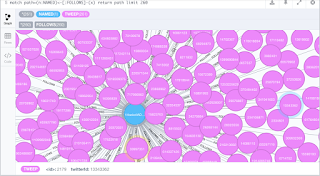- November 29th, 2016: For today's #haskell problem we have a DATABASE (world's smallest H-table) and we aim to fit a line to a time-series. In which a simple mean-gain curve actually fits pretty well with the data in today's #haskell solution
- November 28th, 2016: Today's #haskell exercise we start to look at some real-world data, looking at gains over time. Today's #haskell solution computes gains over time ... also works for losses, yes?
- November 23rd, 2016: Today's #haskell exercise looks at time-series as a 'thing.' Today's #haskell solution charts the projection of #ingress scores over time
- November 22nd, 2016: So many activities in November: #NaNoWriMo2016 and now #ingressyear4 awards. Today's #haskell exercise takes them on. Today's #haskell solution shows I need to ingress 88k points per day; let's get crackin'!
- November 21st, 2016: In honor of it being #NaNoWriMo2016 here's today's #Haskell coach to 'help' (to nag) you write MORE, HARDER, FASTER! Today's #haskell solution shows SOMEbody they'd better get CRACKIN' to finish the #NaNoWriMo2016 writing challenge!
- November 16th, 2016: Today's #haskell exercise focuses on the important things in life: coffee and chocolate!
Today's #haskell solution balances water well enough, but chocolate? That's a mite harder.
- November 15th, 2016: For today's #haskell exercise we look at simple unification on the Maybe-type. Today's #haskell solution is a little monadic/applicative logicto find that Amy is Amy. Surprise, surprise!
- November 14th, 2016: Today's #haskell exercise shows a little bit of Amy's family tree from the Mensa Genius Quiz-a-Day book
- November 11th, 2016: Today's #haskell exercise we tease out information from a Twitter API call to see who this @geophf-person really is! Somehow I got to solving two problems in one day, but OKAY, HERE WE GO! Information on a tweep from Twitter API JSON.
- BONUS: November 11th, 2016: In honor of me solving today's problem yesterday, here's bonus #haskell problem: network of shared twitter followers. Today's #haskell solution shows that twitter follower networks can get a bit ... messy. MANY FOLLOWERS! SUCH WOW! (whispered: the shared follower network is a simple natural transformation from #categorytheory:
natx (++) twerpAsRel tweep1 tweep2
Yeah)
- November 10th, 2016: Today's #haskell exercise: @1HaskellADay has followers. Tweep id 81457442 has followers. Are there shared followers? Today's #haskell solution uses natural transformation to find shared followers of 2 tweeps via the Twitter API JSON
- November 8th, 2016: We call the Twitter API directly to get a set of follower IDs to scan for today's #haskell exercise. Today's solution shows a simple (parsing) transformation from JSON to #haskell values
- November 2nd, 2016: Today's #haskell exercise explores a twitter social network along FOLLOWS-relations. BONUS lets you explore yours.
- November 1st, 2016: For today's #haskell exercise, we look at twitter users and their relations as a JSON-graph.
Incorporates strong typing over predicate logic programming, and, conversely, incorporates predicate logic programming into strongly typed functional languages. The style of predicate logic is from Prolog; the strongly typed functional language is Haskell.
Wednesday, November 30, 2016
November 2016 1HaskellADay Problems and Solutions
Subscribe to:
Post Comments (Atom)






No comments:
Post a Comment